Turkey hunting demands attentive waiting, deep focus on the environment, and flexibility in response to natural conditions. Weather serves as a vital variable among all aspects that hunters need to contemplate. Rain serves as one of the most disputed and toughest environmental conditions for hunters. Several hunters decide to end their hunt upon rainy conditions, but competent hunters understand that turkey hunting in rain can create successful outcomes through proper execution.
The article explores turkey reaction patterns to rainfall alongside strategy modifications and equipment needs for successful hunter operations under wet conditions.
Will Rain Affect Turkey Behavior?
Becoming wet does impact turkey behavior, yet it does not automatically indicate that your hunting day needs to end. The adaptability of turkeys enables them to perform their regular behavior patterns while rainfall persists.
The pattern of their behavior alongside their locomotion capabilities, together with their response to calls, will alter noticeably based on what type of rain and how intense it is.
Where Do Turkeys Go When It Rains?
Rains will encourage turkeys to choose different areas for habitation. The birds shift their movements to protected locations that shield them from rain rather than staying in open spaces that provide clear visibility.
Turkeys are driven to woodlots and brushy areas by light rain until heavy rainfall forces them to take refuge in dense thickets or mature forests with heavy tree canopies.
During rainfall, both hens and gobblers minimize their vocalizations. The reduced sound transmission makes it harder to hear mating calls and rival sounds, causing turkeys to become less vocal in these conditions. Although they may seem inactive, turkeys stay alert and present by remaining quiet and careful.
How Light Rain vs. Heavy Rain Impact Turkey Activity?
- Light Rain: Turkey moves in light rain and continues to feed. Then they might strut in fields or along logging roads. Hunters can move even when they are in the woods without being detected by the muted sounds of the woods.
- Heavy Rain: In contrast, heavy rain usually suppresses turkey movement. They will use dense cover in which to hunker down and stay dry, out of the rain. However, with these conditions, it becomes tougher to find turkeys, and calling may not be so effective. But if you can track them down to where they are holed up, sometimes you can find success by being patient and quiet.
Can You Hunt Turkey In the Rain?
Absolutely. Although it is possible and not always a difficult thing to do, turkey hunting in the rain can be surprisingly effective if done under the right circumstances.
Some consider this a plus because there is less competition amongst other hunters, and some challenges that come with it in the rain. It is natural for pressured birds to behave more naturally, and it should increase your chances of a successful hunt because they’ll be found with fewer people in the woods.
Is Turkey Hunting Good in the Rain?
In the rain, turkey hunting can be good, even in light rain or shortly after a storm. As the rain stops, so do the birds. They become more active and emerge from their cover to dry off and then feed.
One of the most productive times to be in the woods can be this post-rain period. But it will only work if you understand how turkeys behave in damp weather and make the appropriate adjustments to your strategy.
Advantages and Challenges
Advantages:
- There will be fewer hunters in the woods and less competition.
- Easier to move quietly, thanks to the damp ground.
- Birds may be more predictable in their movements.
- Ideal conditions for still-hunting and stalking turkeys
- Rain can dampen scent and noise, allowing a closer approach.
Challenges:
- Reduced turkey vocalization makes locating birds harder.
- Calling and hearing gobblers is more difficult in heavy rain.
- Wet gear can lead to discomfort or distraction.
- Slippery terrain increases the risk of injury.
- Electronics like box calls or decoys with moving parts may malfunction.
There is also no other way in rainy weather except being patient and strategic. In areas where turkeys are likely to feed or travel, they may choose to sit tight rather than running and gunning. You spend a lot of time becoming very adaptable.
Best Period to Hunt Turkey on Rainy Days
In a rainy period, the best time to hunt turkeys is after the rainy period, out of light drizzle or immediately after the rain stops. Now is the time when turkeys are found active, vocal, and out in the field.
The other way is to time your shot for early mornings after an overnight rainstorm because often turkeys fly down from the roost a little later and begin looking for food.
Further, light, steady rain in the mid-morning can also produce solid action. Open fields dry out and turn those birds out to feed — hens tend to lead gobblers deeper into sightline.
Check the weather radar to time your hunts around breaks in the rain. By capitalizing on these short windows, we can turn a soggy morning into a successful hunt.

What Gear Do You Need for a Rainy Day Hunting?
The right outfit is essential when it comes to staying comfortable and effective while turkey hunting in the rain. Rainy hunting is more difficult, but with the proper gear, you can keep yourself dry, sharp, and ready to hunt when thermals or turkey activity increase.
Choosing the right waterproof gear, quiet materials, and durable equipment can be the deciding factor between a miserable outing and a successful one.
1. Waterproof Outerwear
You should have high-quality rain jacket and rain pants. When going on long hikes or doing stakeouts, avoid overheating when the material is breathable but completely waterproof. Fuzzy brushed fabric is best for not rustling and/or alerting nearby birds.
Some popular option such as: Sitka Gear Downpour Jacket – designed specifically for hunters, with a silent waterproof shell and optimized mobility.
2. Waterproof Boots
Include boots with solid ankle support and aggressive tread in your gear list. These insulated, waterproof hunting boots will help you stay on the ground and navigate slippery, muddy terrain.
Popular Option: Kalkal Camo Neoprene Hunting Boots – known for comfort, durability, and excellent grip in wet environments.
3. Ground Blind
Rainy conditions could be solved by a pop-up blind with a waterproof roof. It protects from the elements and keeps you from seeing, or being seen, while calling or waiting out a gobbler.
Popular Option: Kalkal 300 Degree See-Thru Blind – compact, easy to set up, and weather-resistant.
4. Rain Cover for Firearm or Bow
Keeping your weapon dry is vital to ensure functionality and safety. A slip-on rain cover or even a simple trash bag can prevent moisture from affecting your gun’s action or a bowstring’s tension.
5. Dry Bag or Waterproof Backpack
Protect your calls, licenses, phone, snacks, and extra layers from water damage. Many waterproof backpacks now include roll-top closures and internal compartments to organize gear efficiently.
6. Latex or Waterproof Mouth Calls
Traditional box and slate calls often fail in wet weather. Mouth calls made from waterproof materials remain effective and can be used hands-free inside a ground blind or when stalking.
Bonus Tip: Bring an extra pair of dry gloves and socks in a sealed bag—cold, wet hands or feet can quickly end a hunt early. Also consider anti-fog wipes for optics and a waterproof seat cushion to stay dry while waiting.
Tips for Hunting Turkey In the Rain
Success in rainy conditions often comes down to knowing where to hunt and how to adjust your tactics. Rain affects turkey behavior, visibility, and sound transmission, so your strategy must adapt accordingly.
Where to Hunt Turkey in the Rain?
- Field Edges: Turkeys often feed in open fields, pastures, or logging roads during light rain. The rain softens the ground, making it easier for them to reach worms and insects.
- Woods with Canopy Cover: Turkeys prefer to shelter in moderate to heavy rain under pine stands, dense hardwoods or near ridgelines that provide cover. They do not expose themselves completely when it starts raining strongly.
- Near Roost Sites: Turkeys do not always burst down from the roost during prolonged rain. But hunting early in the morning, just after a break in the weather, can be highly productive near roosting areas.
Best Ways to Hunt Turkey in the Rain
- Use Ground Blinds: Not only does a waterproof ground blind keep you dry, but it also tends to hide excellent movements when you are calling or changing gear.
- Stalk with Caution: Rain makes sound faint, whispering a screen to assign numbers for movement. Visibility may be limited, so stay vigilant and run daily.
- Adjust Calling Techniques: Rain calms sound by helping to adjust calling techniques. You can increase the volume and pitch of your calls to call distant turkeys. Waterproof coatings or diaphragm calls are what I have found work best for box calls.
- Watch for Post-Rain Activity: Turkeys often shake off when it rains, as soon as it stops. These key windows are when you want to position yourself in feeding areas or field edges.
- Be Patient: In wet weather, turkey movements tend to be slower and more deliberate. Try not to move too much because birds are going to find their way to you, set yourself up in high-traffic fields, and let birds do the best of the walking.
Important Tips and Strategies
1. Scout Ahead of Time
Before going to a turkey hunt, we must identify turkey travel corridors, roosting trees, and dusting areas as well as feeding zones. They then pay attention to low-lying areas that they know will flood during rain or inclement weather. Placing trail cameras in or near the edges of fields and logging roads can detect patterns through different weather conditions.
2. Stay Dry and Comfortable
Drop a compact waterproof seat cushion or foldable stool to prevent spending your day sitting in soaked terrain. Or you could just wear a turkey hunting vest with seat, which allows you to sit anywhere and stay dry at the same time.
Base layers should be moisture-wicking dress, waterproof outer clothing. And make sure you have an extra pair of socks and gloves in a dry bag to keep your hands warm and dry, which will help to clear your throat in calling as well as making shooting accurate.
3. Bring Binoculars
Visibility is limited by rainy or foggy conditions. Since turkeys move slowly and cautiously, especially when doing so on distant field edges or through open woods, those who use binoculars are free to listen, deliberately scouting them in this manner. Here are our top picks: 5 Best Binoculars For Hunting.
4. Check Weather Forecasts
It’s best to use hourly forecasts to plan your hunts around breaks in the weather. Apps like Windy or HuntStand can show you precipitation timing, wind direction, and barometric pressure changes that influence turkey movement. Check more Best Hunting Apps Recommendations.
5. Be Flexible
Don’t hesitate to move if your first setup isn’t productive in 45–60 minutes. Sometimes all that is needed is a short move to more elevated ground or onto a new field edge.
Conclusion
While some might envision Turkey hunting in the rain as not the perfect type of hunt, the upsides there are unique if you are willing to be challenged. Rainy conditions can make it challenging to understand how turkeys will behave, prepare the right gear, and change your tactics can be a rewarding and memorable hunt.
Rainy day hunts can be productive for two reasons: hunters are simply less in the woods, and birds remain more predictable. The next time the dark clouds roll in, don’t cancel your plans, gear up, and head into the woods for a wet-weather turkey adventure.



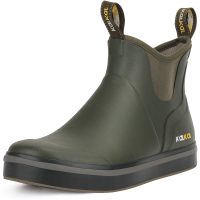

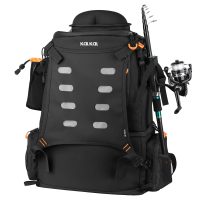
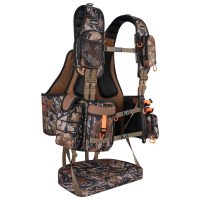
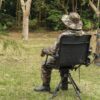
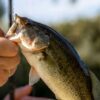

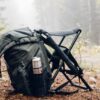
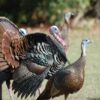
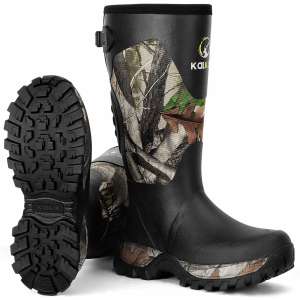
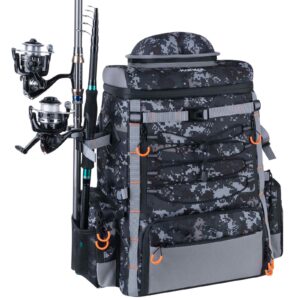
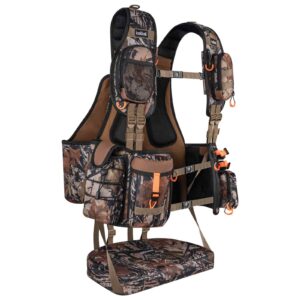
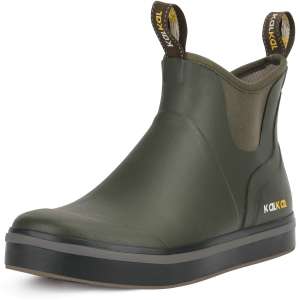
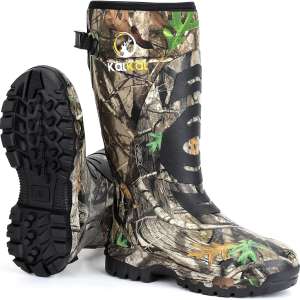



Leave a reply